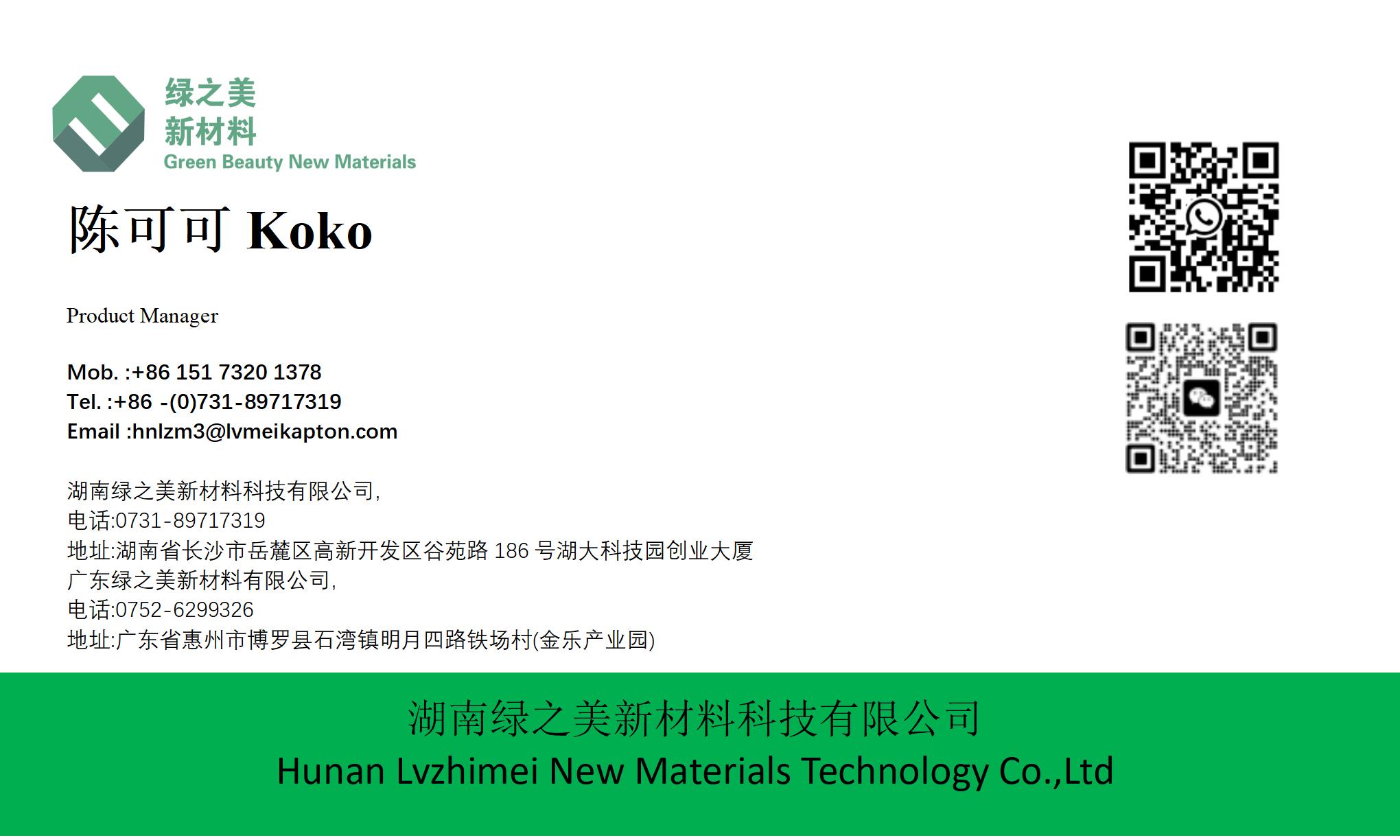hnlzm@lvmeikapton.com
+86 13787123465


Hunan Lvzhimei New Material Technology Co., Ltd.


NameDescriptionContent
How Self-Adhesive Back Blocking Spray Paint Tape Revolutionizes Electronics Manufacturing | https://www.lvmeikapton.com/
Source:
|
Author:Koko Chan
|
Published time: 2025-04-29
|
121 Views
|
Share:
In the rapidly evolving landscape of electronics manufacturing, thermal processes such as high-temperature spraying and wave soldering pose significant challenges to component protection. Traditional masking materials often fail to withstand extreme temperatures, leading to adhesive residue, component degradation, or process inefficiencies. Enter self-adhesive back blocking spray paint tape—a revolutionary innovation that combines advanced adhesive properties, PET (polyethylene terephthalate) composition, and compatibility with PI (polyimide) tape to revolutionize shielding for sensitive electronics. This article delves into its transformative role, exploring its technical attributes, applications, and industry impact.
How Self-Adhesive Back Blocking Spray Paint Tape Revolutionizes Electronics Manufacturing
IntroductionIn the rapidly evolving landscape of electronics manufacturing, thermal processes such as high-temperature spraying and wave soldering pose significant challenges to component protection. Traditional masking materials often fail to withstand extreme temperatures, leading to adhesive residue, component degradation, or process inefficiencies. Enter self-adhesive back blocking spray paint tape—a revolutionary innovation that combines advanced adhesive properties, PET (polyethylene terephthalate) composition, and compatibility with PI (polyimide) tape to revolutionize shielding for sensitive electronics. This article delves into its transformative role, exploring its technical attributes, applications, and industry impact.
Technical Background: The Science Behind the Tape1. PET Material CompositionPET, a thermoplastic polymer renowned for its mechanical strength, chemical resistance, and dimensional stability, serves as the tape’s core substrate. Its crystalline structure allows for exceptional thermal endurance, withstanding temperatures up to 300°C without deformation or degradation. This makes PET ideal for processes like automotive engine coatings or PCB (printed circuit board) wave soldering, where temperatures can exceed 260°C.
2. Adhesive Layer EngineeringThe tape’s adhesive layer employs a proprietary blend of silicone-based polymers, featuring unique properties:
●
High Adhesion Coefficient: Ensures secure bonding to substrates (metal, plastic, glass) even during thermal cycling, preventing displacement.
●
Zero Residue Removal: Post-process removal leaves no adhesive残留, eliminating costly cleaning steps.
●
Solvent Resistance: Shields components from chemical exposure during spray painting or etching processes.
3. Integration with PI TapeIn complex circuits, the tape often complements PI tape (e.g., Kapton®), forming a synergistic system:
●
PI Tape: Provides additional thermal insulation (up to 400°C) and electrical barrier for critical components.
●
PET-Based Tape: Acts as a secondary barrier, enhancing overall adhesion stability and preventing PI tape delamination under mechanical stress.
Key Features: Advantages Over Conventional Materials
Feature | Benefit |
300°C Temperature Resistance | Enables direct exposure to high-heat processes (e.g., powder coating at 280°C) without tape degradation or discoloration. |
Electrical Insulation | Lvmeikapton variants offer dielectric strength >10 kV/mm, safeguarding capacitors and transformers from arcing. |
Process Efficiency | Rapid application (via roll-to-roll systems) and effortless removal (via peel-off mechanism) reduce production downtime. |
Multi-Environment Compatibility | Operates effectively in humid, corrosive, or vacuum environments, ensuring reliability across diverse manufacturing settings. |
Applications: Transforming Industries1. Automotive Electronics
●
Engine Component Masking: During cylinder head coatings, the tape shields sensors and wiring harnesses from paint overspray, maintaining electrical integrity.
●
Underhood Protection: On heat-resistant connectors, it prevents corrosion from engine heat (up to 150°C) and chemical exposure.
2. PCB Wave Soldering
●
Gold Finger Protection: Applied to PCB edges, it blocks molten solder from infiltrating contact pads, reducing defects by 70% (compared to non-adhesive masking).
●
Thermal Buffering: Its thermal conductivity (0.3 W/mK) cushions components from rapid temperature fluctuations, extending board lifespan.
3. Aerospace Manufacturing
●
Composite Bonding: In carbon fiber assemblies, the tape ensures precise masking for epoxy curing cycles (180°C), avoiding adhesion failures.
●
EMI Shielding Integration: When paired with conductive tapes, it forms multilayer barriers against electromagnetic interference in avionics systems.
Market Trends and Future ProspectsGlobal demand for high-temperature tapes is projected to grow at 8.5% CAGR (2023-2028), driven by:
1.
Electrification Expansion: Rising adoption of EVs and renewable energy systems requires robust thermal management solutions.
2.
Miniaturization Push: Shrinking electronics demand tape with micron-level precision and higher adhesion consistency.
3.
Sustainability Shift: Future iterations are likely to incorporate biodegradable PET variants or recyclable adhesive formulas.
ConclusionSelf-adhesive back blocking spray paint tape’s convergence of PET resilience, advanced adhesive technology, and PI compatibility marks a paradigm shift in electronics protection. By enabling seamless integration into high-temperature processes, it not only enhances product reliability but also streamlines manufacturing workflows. As industries demand increasingly严苛 thermal environments, this tape’s evolution—from a passive barrier to an active component protection system—will continue to redefine electronics assembly standards.



Hunan Lvzhimei New Material Technology Co., Ltd.
Quick Links
Product Categories
© 2024 Hunan Lvzhimei New Material Technology Co., Ltd.All Rights Reserved. Designed by Erge
0731 - 89717319
hnlzm@lvmeikapton.com
+86 13787123465
Room 502, Chuangye Building, No186, Guyuan Road, High-Tech District, Changsha, Hunan, China
CONTACT



